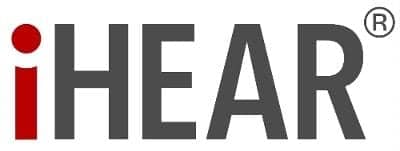iHEAR Medical—a venture-backed firm dedicated to addressing the global need for affordable and accessible hearing solutions—announced that it supports the Over-the-Counter (OTC) Hearing Aid Act of 2017, which was recently introduced in Congress to improve access and affordability of hearing aids. Recent reports have reportedly highlighted how hearing aid use can be a life-changing experience for many.
Provisions of the OTC Hearing Aid Act of 2017 are based on recommendations from the President’s Council of Advisors on Science and Technology (PCAST) and the National Academies of Science, Engineering, and Medicine (NAS).
“The OTC Hearing Aid Act is consistent with measures iHEAR has been calling for to lower the cost and remove barriers for millions currently denied access to quality hearing care. The bill also creates a new framework for technological innovation and new business models,” said Adnan Shennib, founder & CEO of iHEAR Medical.
iHEAR is pioneering cloud-based hearing solutions to deliver high quality hearing aids directly to consumers at a fraction of the cost of conventional programmable hearing aids, which cost $2,400 per device, on average, according to iHEAR. With programmable digital hearing aids offered at $299 per device, iHEAR brings the cost of advanced hearing aids in line with prescription eyeglasses.
For more information on iHEAR’s products visit: http://www.ihearmedical.com/
Changing Global Demographics and Socioeconomics
The World Health Organization (WHO) estimates over 5% of the world’s population, or approximately 360 million people, suffer from a disabling level of hearing loss. Hearing loss has become increasingly prevalent in the United States, and is now the third most common health problem after heart disease and arthritis, according to the Hearing Loss Association of America.
Disparity in Hearing Healthcare is Widespread
Hearing aids, including premium models, cost no more than $100 to manufacture, according to iHEAR. However, consumers are expected to pay a ten to twenty-fold markup for a programmable hearing aid, said iHEAR. It is iHEAR’s view that to capture more of the profits, the leading manufacturers have taken control of hearing aid distribution, acquiring hearing aid centers, retail chains, and audiology networks. iHEAR believes that with increased ownership and control over the distribution, the industry maintains a high-price, low-volume business model in which the overwhelming majority of those in need are left without a hearing solution.
iHEAR also believes that the skyrocketing cost of quality hearing aids has widened the disparity in hearing health, with the affluent enjoying the benefits of customized hearing aids, while the majority continue to suffer the devastating effects of disabling hearing impairment. The disparity in hearing care particularly hits rural areas and inner cities, where populations have less income and reduced access to qualified hearing care, said iHEAR.
Fixing a Broken Hearing Health System Requires more than New Regulations
The OTC Hearing Aid Act reportedly intends to remove layers of regulatory barriers preventing consumers from accessing quality hearing health care. The OTC Hearing Aid Act confirms the FDA’s authority to supersede state laws that are confusing and in conflict with existing FDA regulations. However, iHEAR believes that new regulations will not fix the broken hearing health system without innovations that empower consumers and deliver effective direct-to-consumer hearing solutions. These innovations include accurate home hearing screening, self-fitting tools, and telemedicine to connect hearing professionals to consumers in communities with limited access to clinical settings.
New models for delivering hearing products and services are also needed to create a new value proposition based on low-price, high-quality hearing care. iHEAR Medical intends to leverage its proprietary online platform to introduce innovative direct-to-consumer distribution models including through drug stores and retail chains. The new OTC regulations in conjunction with innovative technology and alternative distribution models will disrupt the current ineffective paradigm of high-price, low-volume hearing care. This disruption is necessary to serve the millions currently deprived of affordable hearing solutions, as well as the rapidly approaching silver tsunami of baby boomers, according to iHEAR.
Source: iHEAR Medical






